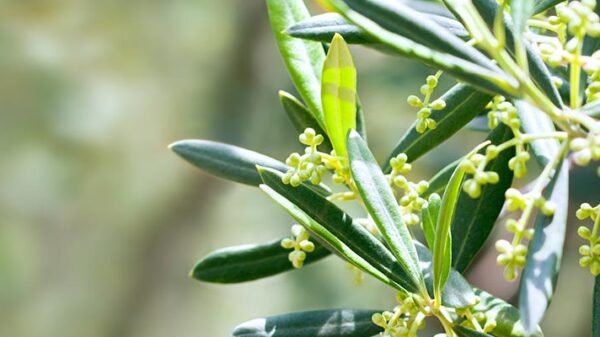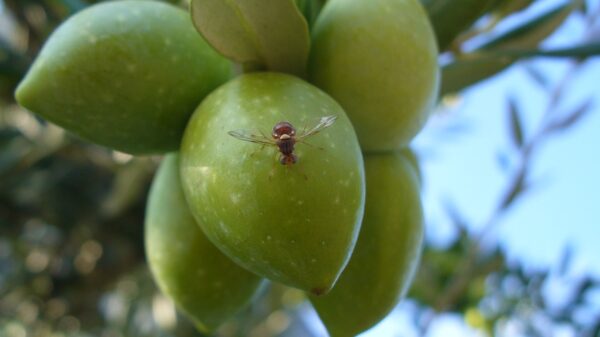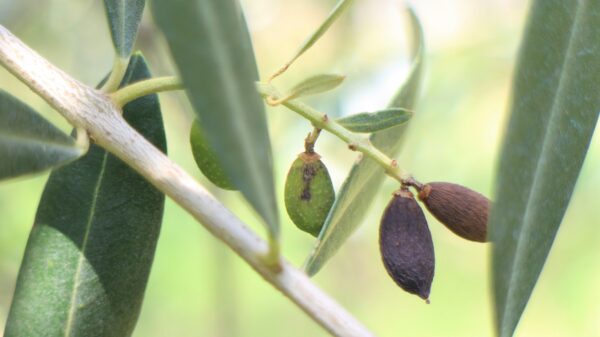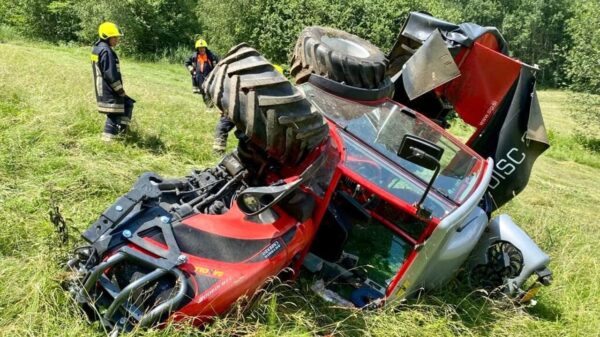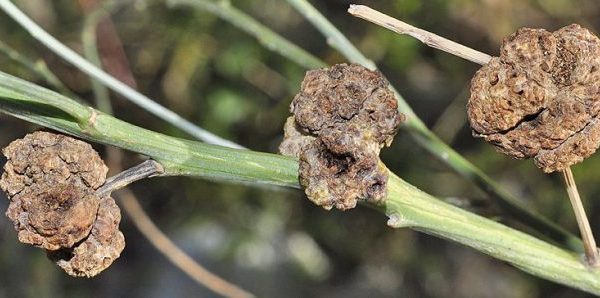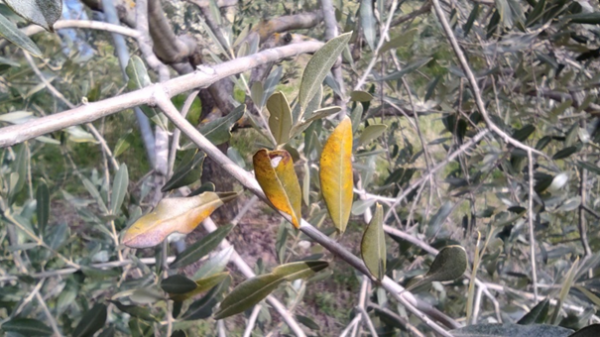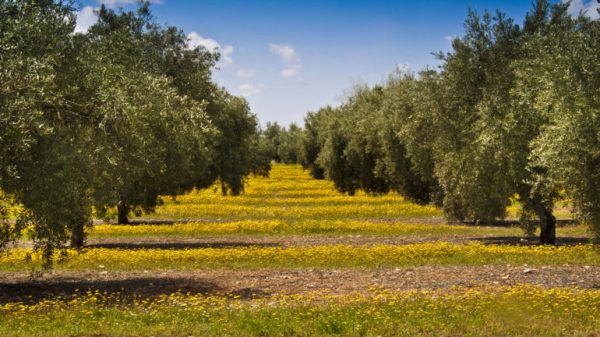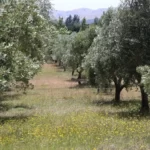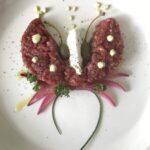In the past week, from the checks carried out on the monitoring points, they have been detected captures of adults exceeding 30 individuals: this denotes that the Moscow, both as an adult and as a pupa, has passed the winter without undergoing important mortalities. Winter, on the other hand, had higher than normal temperatures and the olive fly, as known, spends this period - both as an adult and mainly as a pupa - in the ground, burrowing at a depth varying from 3 to 10 cm. During this period, the development of the pupa is also conditioned by minimal increases in temperature and, as soon as they reach 9-11 ° C, the insect manages to resume and complete its development, so as to reach the adult state and flicker.
In this period - and while awaiting the start of ovipositions on the new olives, generally in mid-July - the fly adults transit from the olive groves to the neighboring territories, in search of sugary exudates and protein substances, such as honeydew and decomposing organic products, foods necessary for their own maintenance and maturation of the gonads, remaining in a phase of low activity, defined as "white period”.
The wetting of the leaves in the morning and the availability of water in the environment favor the presence of the fly, whose flight and food search activity is maintained with temperatures around 15-17 ° C, situations also present in our olive-growing territories in this period.
It is thus possible to think that, among the main causes that will influence both the number of olive fly individuals and the infestations in the month of July, which will give birth to the first generation in summer 2023, there may be these mentioned contributing causes. It is therefore good to evaluate what we have available for this 2023 against the olive fly.
Mass-catch traps – Already with the month of April, considering the current amount of catches, it is possible to place long-lasting traps, longer than 180 days: 15 traps per 1.000 m2, i.e. 150 per hectare or about 1 trap every 2-3 adult olive trees. After flowering and before the small drupes become sensitive to fly attacks, it is still possible to use long-lasting traps or traditional traps, with a classic bag with food attractants and pheromones.
For the use of traps to be effective for the mass capture of flies, it is important that their positioning is homogeneous, continuous and that the area of use is as large as possible. Mass trapping traps are best exploited when they are exposed mainly along the borders with roads, with open spaces, alongside neighbors who do not apply these devices, and where the risk of olive fly is historically higher.
The traps should be exposed at about 2 meters from the ground or more, in the shade of the sunny part of the canopy, removing those twigs that prevent the flies from accessing the trap.
Fly killer food baits – Fly-killing food baits are plant protection products made up of substances that attract flies, to which an insecticide molecule has been added. They are easily washed away, therefore, with each rainfall exceeding 10 mm it is necessary to repeat the treatment, with the advantage that, with each repetition, they become fully efficient again. If used rationally, insecticide food baits perform an effective contrast action.
Major brands of flybaits contain small doses of spinosad, an active substance obtained from fermentation activated by a soil bacterium which is mixed with a specific bait that attracts diptera. The adulticidal activity is carried out by ingestion and contact.
It should be used at a dose of 1-1,2 litres/ha diluted in 4 litres/ha of water. Higher concentrations may favor the presence of sooty molds. 30 ml of diluted liquid should be sprayed, on alternate plants, on a branch on the south side of the plant. The distribution must be performed with a spray bottle or shoulder pump; eight repetitions are possible in the year, approximately every 15 days depending on the rainfall; the start of the applications must take place following the results of the monitoring. The waiting time is 7 days. It is good practice, after several years of using deltamethrin-based traps, to alternate with the use of Spinosad to change the type of adult insecticide. These products are allowed in organic farming.
Hydrolysed protein – The products containing hydrolysed proteins are also used as baits: they must be diluted in water, at a dose of 10 ml/litre, and a deltamethrin-based insecticide should be added to the bait, at a dose of 0,7 ml/litre. The mixture of hydrolysed proteins and insecticide should be sprayed, with a sprayer or shoulder pump, at the rate of 300 ml of diluted liquid per plant, starting from the south side, and then turning towards the west in subsequent applications.
For each single olive tree a maximum of three applications per year should be made, spaced approximately 20-30 days, depending on the rainfall. To have a more prolonged effect and lower incidence of leaching rains, it is possible to spray the bait on alternate olive trees or alternate rows approximately every 10-15 days, also alternating the date of distribution. In any case, each olive tree must not receive the treatment more than three times a year.
When exhibited, it is advisable to mark the groups of olive trees or rows with ribbons so as to be easily identified. This type of bait is not allowed in organic farming.
Rock dust – Rock dust is part of the defense strategy against the olive fly due to its oviposition repellency; among these we find bentonite, kaolin, zeolite, lime; they dissolve easily in water, but deposits in the atomizer should be avoided because they could clog the filters. For this reason, the suspension must be kept continuously mixed throughout the treatment period.
These products, when distributed on olive trees, cause the foliage to take on a white colour. They are easily washable with a rain of 20 mm, for this reason the addition of an adhesive, such as potassium silicate, gives them more persistence. The sequence of interventions must be implemented with an initial sprinkling of the product with doses per hectare as per the label, to continue, in subsequent treatments, with a lower dosage.
The use of rock dust offers advantages not only as antideponents, but also performs a protective action on the foliage of plants and olives from heat strokes and burns, improving foliar epotranspiration.
It is useful to remember that copper products can also be added to these products for a combined action.
Tannins and invigorating substances – Tannins, an example is the "wood distillate", are molecules synthesized by the plants themselves and are endowed with antioxidant activity, with a protective and strengthening function of the cells, they also perform the function of cellular and phytohormone metabolism, they enter into contrast actions to the olive fly as antideponents.
Adulticidal and ovo-larvicidal insecticides – These insecticides can be used when the presence of adults, eggs and fly larvae reaches levels where an immediate killing power of their population is necessary.
The main formulations are based on:
1) Acetamiprid: an active ingredient belonging to the chemical category of Chloropyridinyl neonicotidoids, an active substance characterized by a cytotropic-translaminar activity, which means that it protects both sides of the treated leaf surface, with a very rapid action. In fact, after only 30 minutes, the affected insect dies. Acetamiprid is active on adults and acts on eggs and larvae of the first age, less so on those of the second and third age.
2) Flupyradifuron: an insecticide belonging to the butenolide chemical family with a mechanism of action similar to neonicotinoids. It acts by contact and ingestion on both adult and juvenile forms, eggs and larvae, it is absorbed by the vegetation, translocated systemically and redistributed on all the vegetation by translaminar way.
3) Deltamethrin: it is a pyrethroid insecticide, active against adults, it acts above all by contact and secondarily by ingestion, it has a good knockdown power and is photostable, it is used as a covering product; to date, it is not included in several regional integrated production specifications.
Copper as an antideponent – In the fight against the olive fly, products with a bactericidal or bacteriostatic action are used, such as copper, which has no direct effect against the adult or the larvae of the olive fly, but acts as a bactericide against the epiphytic bacteria of the olive tree. that is, present above the leaves and branches, which are a food for the adult fly and a necessary presence in the digestive processes of the young larvae. The cupric treatment is therefore given to limit oviposition, slow down the maturation of the eggs and produce a certain mortality in the youngest larval stages and a repellent effect on oviposition.
Beauveria bassiana – We should also mention Beauveria bassiana, an entomopathogenic fungus used in the eco-sustainable defense of plants from various phytophagous insects: it performs a preventive action and does not represent any risk for bees. It acts by contact and, in order for its action to be carried out, the spores must adhere to the surface of the host so that the biochemical processes of penetration can start with the production of enzymes which cause the death of the insect. It also has an oviposition repellent action.
AIPO Director
Interregional Association
Olive oil producers

